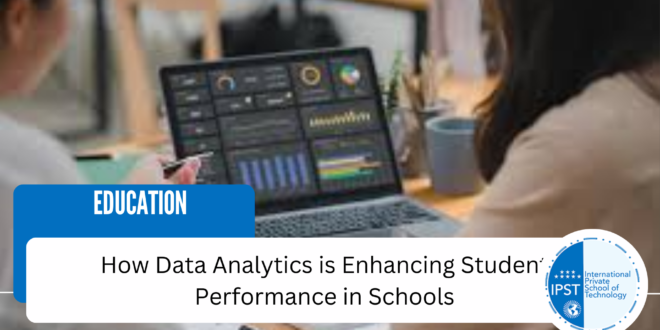In recent years, data analytics has become a game-changer in education. By leveraging the power of data, schools can gain insights into student performance, identify learning gaps, and personalize education to meet the individual needs of each student. But how exactly is data analytics enhancing student performance in schools? Let’s explore the various ways this powerful tool is being utilized in modern classrooms.
The Role of Data Analytics in Enhancing Student Performance
1. Personalized Learning
One of the primary ways data analytics is enhancing student performance is by enabling personalized learning. By analyzing data from assessments, assignments, and classroom participation, teachers can identify each student’s strengths and weaknesses. This allows educators to tailor lesson plans and learning strategies to meet the specific needs of each student, ensuring that no one is left behind.
2. Predictive Analytics for Early Intervention
Predictive analytics helps identify students who are at risk of falling behind or struggling academically. By analyzing historical performance data, schools can predict potential issues before they arise. Early interventions—such as additional tutoring, personalized study plans, or emotional support—can then be implemented to address these challenges, improving student outcomes and preventing academic failure.
3. Improved Teaching Strategies
Data analytics allows teachers to track student performance over time, enabling them to assess the effectiveness of different teaching strategies. Teachers can analyze trends in student data and adjust their instructional methods to ensure they are meeting the diverse learning needs of their students. This data-driven approach leads to more effective teaching and better student performance.
4. Real-Time Feedback and Assessment
Data analytics provides teachers with real-time insights into student performance, allowing for timely interventions. Online quizzes, assignments, and tests can be instantly graded, providing immediate feedback to students. This real-time assessment helps both students and teachers understand where improvements need to be made and ensures that learning is ongoing and adaptive.
5. Data-Driven Decision Making
Data analytics enables schools and educational leaders to make informed, data-driven decisions about curriculum design, teaching methods, and resource allocation. By analyzing performance data at the school or district level, educators can make strategic decisions that improve the overall quality of education and enhance student performance on a larger scale.
Challenges of Using Data Analytics in Education
1. Data Privacy and Security Concerns
The use of student data raises concerns about privacy and security. Schools must ensure that they adhere to data protection laws and safeguard sensitive information. The implementation of robust data protection protocols is essential to maintaining trust between schools, students, and parents.
2. Training Educators to Use Data Effectively
For data analytics to be effective in schools, educators need proper training in data interpretation and analysis. Without the necessary skills, teachers may struggle to utilize data effectively, leading to suboptimal results. Ongoing professional development in data literacy is crucial to ensuring that teachers can harness the full potential of data analytics.
3. Over-Reliance on Data
While data analytics can provide valuable insights, there is a risk of becoming too reliant on quantitative data and neglecting qualitative factors such as creativity, emotional intelligence, and other non-measurable aspects of student development. A balanced approach that combines data-driven insights with a holistic view of student growth is essential.
4. Resource Constraints
Implementing data analytics in schools requires significant investment in technology and infrastructure. Many schools may face resource constraints, especially in underfunded districts. Ensuring equitable access to data analytics tools is critical to avoiding disparities in educational opportunities.
The Future of Data Analytics in Education
As technology continues to evolve, the role of data analytics in education will expand further. Artificial intelligence (AI) and machine learning are expected to play an increasingly important role in analyzing vast amounts of student data and providing even more personalized learning experiences. The integration of these advanced technologies will allow schools to gain deeper insights into student needs and improve educational outcomes on a larger scale.
Data analytics is transforming education by enabling personalized learning, early intervention, and more effective teaching strategies. By harnessing the power of data, schools can improve student performance, make informed decisions, and create a more efficient and effective learning environment. However, addressing challenges such as data privacy, teacher training, and resource constraints is crucial for ensuring that data analytics can be fully realized in education. With the continued advancement of technology, data analytics will undoubtedly continue to play a key role in shaping the future of education.
 International Private School of Technology المدرسة الدولية الخاصة للتكنولوجيا Private School مدرسة خاصة للتكوين المهني
International Private School of Technology المدرسة الدولية الخاصة للتكنولوجيا Private School مدرسة خاصة للتكوين المهني


